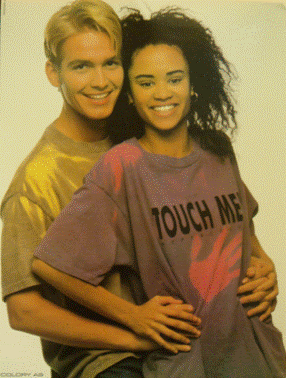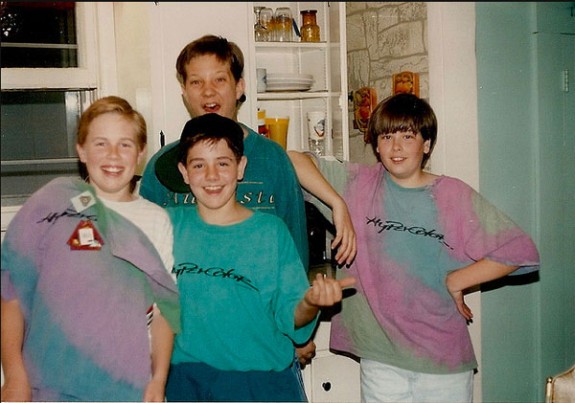Why Hypercolor T-Shirts Were Just a One-Hit Wonder
Heat-sensitive color made this sportswear a hot item—but it didn’t last
![]()
It was 1991: “Roseanne was on TV, Terminator 2 was on the big screen, Color Me Badd was on the radio and Hypercolor t-shirts were on the backs of millions of middle- and high school-age kids across America.
The Hypercolor fad gripped the nation that year, thanks to the Seattle-based sportswear company that created them, Generra. In fact, in a brief three-month span, between February and May 1991, the company sold a whopping $50 million worth of color-changing, heat-sensitive T-shirts, shorts, pants, sweatshirts and tights.
In addition to its color-morphing cool factor, the “mood-ring of the ’90s” also had game-changing potential for a young adult brimming with hormones. Imagine: You could walk up to your crush in the hallway between classes, take note of the shirt he or she was wearing emblazoned with “Hypercolor,” casually place your hand on him or her, and the warmth of your touch would change the shirt’s color before the eyes of both of you. Let the sparks fly!
Besides functioning as a flirtation device, Hypercolor was a mysteriously rad technology you could wear on your back for about $20. But how simple was it?
The “Metamorphic Color System,” as Generra cryptically called the manner in which body heat (or excessive perspiration, for those unfortunately prone to sweaty armpits) changed the fabric’s color using thermochromatic pigments as its special sauce. Mental Floss explains that the shirts were dyed twice: first with a permanent dye and again with a thermochromatic dye. The thermochromic dye is usually a mixture of a leuco dye, a weak acid, and salt. (Leuco dye is also used on the side of a Duracell battery to see if it’s still charged or on food packaging to gauge temperature.)
When the shirt heated up or cooled down, the molecules in the dye changed shape and shifted from absorbing light to releasing it, making the color transform, as if by magic!
Sadly, though, after a handful of washes, or one laundering misstep in too-hot water, the magic powers faded and the shirt froze permanently into a purple-brown mushy color.
But that wasn’t Hypercolor’s only misfortune. As a result of mismanagement and overproduction, Generra couldn’t handle its overnight success and declared bankruptcy only a year later, in 1992. An article in the Seattle Times in 1992, Generra: Hot Start, Then Cold Reality—Company Reflects Industry’s Woes, recounts company principal Steven Miska saying, ”We tried to make too much product available in too short a period of time.” If he could do it again, Miska said, he would have limited distribution, “which would have done a lot to prolong the life of the product.”
Hypercolor went the way of Color Me Badd: from Casey Kasem’s Top 40 to a one-hit wonder.
Attempts to reinvigorate the brand, the concept or the lifestyle—if you were a real Hypercolor fanatic—never quite gained the momentum of the initial early ’90s fad. Around 2008, Puma, American Apparel and other indie designers dipped their toes into the color-changing concept with sneakers, T-shirts and scarves, but the “special effects garments” as Body Faders calls current-day Hypercolor have nowhere near the cachet they had a couple decades ago.
/https://tf-cmsv2-smithsonianmag-media.s3.amazonaws.com/accounts/headshot/emily-spivack-240.jpg)


/https://tf-cmsv2-smithsonianmag-media.s3.amazonaws.com/accounts/headshot/emily-spivack-240.jpg)